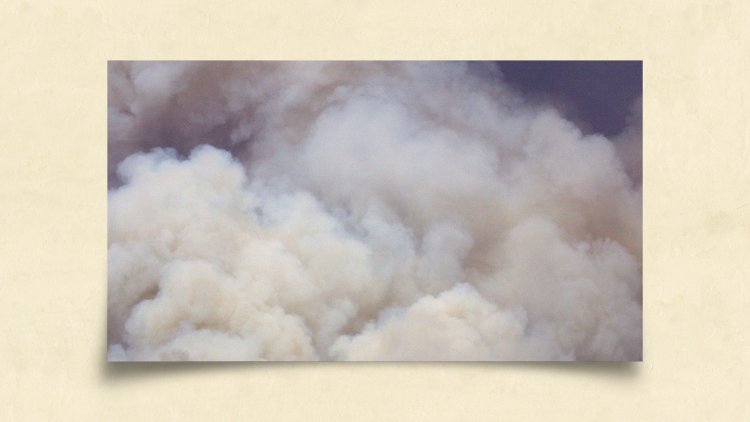How Poetry Can Map Defiance
A conversation with the Diné poet Kinsale Drake about “Making a Monument Valley”

This is an edition of the Books Briefing, our editors’ weekly guide to the best in books.
The 24-year-old Diné poet Kinsale Drake’s “Making a Monument Valley,” which appears in The Atlantic’s September issue, maps the Indigenous history of Los Angeles with pulsing, kinetic language. Drake’s debut collection of poems, The Sky Was Once a Dark Blanket, will be published next month; ahead of its release, I asked Drake a few questions about “Monument Valley” and its ride through the haunted cityscape.
This interview has been edited and condensed for clarity.
Walt Hunter: Tell us a little about this poem, Kinsale. Where are we in it?
Kinsale Drake: The themes of the poem derive from my experience working on Tongva lands, in Los Angeles, while keeping in mind my community in Naatsis’aan, in Southern Utah, and our conscious relationship with land that is so much more than an extractive one. I was always trying to move with purpose in a city that was still a people’s home. I’m invested in images of haunting and everyday rebellion. I wanted to foreground survivance, a term coined most famously by Gerald Vizenor to mean an active sense of presence, a continuance of Native stories, and a refusal to disappear.
Hunter: Your poem describes the landscape with such memorable language, full of auditory echoes and ricocheting sounds. What does poetic language have to do with the history of land in the United States—stolen and occupied land, in particular?
Drake: The work of honoring land as it always has been, and what it is now, is a loving and uncomfortable practice. Moving beyond acknowledgment, which this poem pushes against, how can we, every day, exercise our sovereignty and self-determination as Indigenous peoples—and as witnesses of this dispossession? Our survival—how is that mirrored in the cityscape? How does the land push back?
Poems can map that defiance. A poem weaves together creation stories, knowledge of dispossession and relocation, and contemporary syntax, to resist containment or erasure or apology.
Tommy Orange is a great example of a writer illuminating how diverse and expansive the urban Native population is and just how intricate those relationships with urbanscapes are. We can define for ourselves how we honor, celebrate, acknowledge, and act in reciprocity with the land and, to some extent, the city. Especially following the Indian Relocation Act of 1956, as a result of which thousands of families were relocated in an attempt to destroy and assimilate Native nations, and then even further removed within the city (Bunker Hill, for example, used to be the urban NDN capital of LA), stories rewrite what it is to be Native now.
Hunter: For people who love your work, what poets would you like them to read next?
Drake: If you enjoyed this poem, I humbly recommend NDN Coping Mechanisms, by Billy-Ray Belcourt (Driftpile Cree); Postcolonial Love Poem, by Natalie Diaz (Mojave); Bad Indians, by Deborah Miranda (Ohlone-Costanoan Esselen Nation); and There There and Wandering Stars, by Tommy Orange (Cheyenne and Arapaho Tribes) for further reading on urban spaces and resistance, radical imagination, utopia, and apocalypse.
When you buy a book using a link in this newsletter, we receive a commission. Thank you for supporting The Atlantic.
Sign up for The Wonder Reader, a Saturday newsletter in which our editors recommend stories to spark your curiosity and fill you with delight.
Explore all of our newsletters.
What's Your Reaction?




















